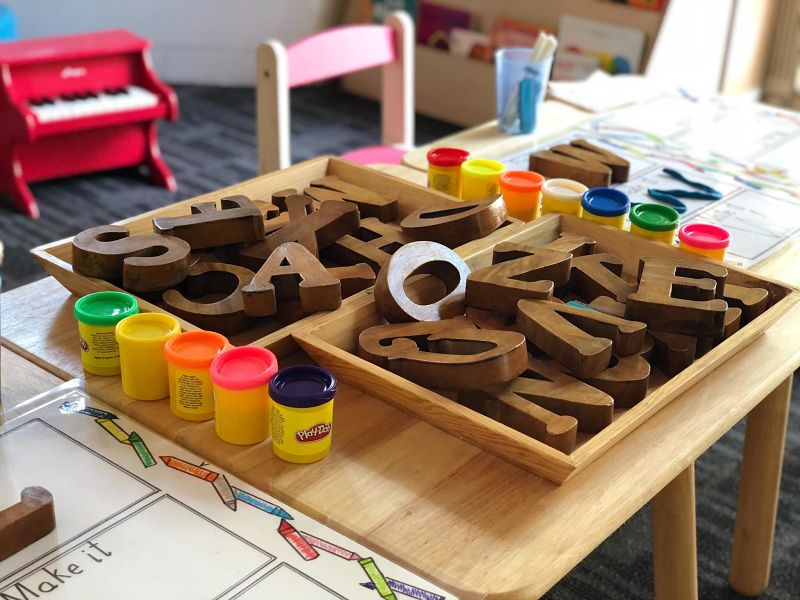Effective Instruction in the Classroom
 Photo by Gautam Arora on Unsplash
Photo by Gautam Arora on Unsplash
“Effective instruction practices are an integral part of effective behavior management practices” (Sprick, 2006). Effective instruction influences student behavior and will prevent much misbehavior. When students are engaged in meaningful tasks, they have no time for misbehavior. When students succeed, they feel a sense of accomplishment which motivates them to behave in a responsible manner (Sprick, 2006).
A behavior problem may be an instructional problem. A good behavior plan can prevent many problems, but teachers need a good lesson plan, which will help prevent misbehavior from boredom or frustration (IRIS Center). Students with higher levels of problem behaviors may have difficulty meeting the academic and social requirements of the classroom, which leads to their inappropriate behavior. The teacher should make the demands in the classroom environment more learner-friendly to help decrease problem behavior.
Teachers must consider students’ individual interests, talents, personalities, and motivation levels when planning instruction. In choosing an activity, teachers should think through its qualities and appropriateness in terms of management, and make sure it contributes to learning and engagement. It needs to involve students in a meaningful way (Maclennan, 1987). Teachers can use differentiation to ensure that students at all levels grow in learning. Teachers should seek to understand students’ readiness, use flexible instruction and continual assessment, and remember that students learn at different rates and in different ways. They might use an alternative method of doing a standard activity, alter the sequence of activities, or adapt an activity (Maclennan, 1987).
The teacher can implement effective instruction in their presentation style and require active involvement of students, which encourages a high success rate for students. Varying your voice tone, using humor, varying the intensity, clarifying the purpose of the lesson, and clarifying the information presented will aid the presentation. Keeping students engaged by using questions, brainstorming, working in pairs, assigning small independent tasks, sharing personal examples, doing role-play, and using visual aids and guided practice helps students to stay involved. Students should receive immediate feedback on their performances (Sprick, 2006).
Some strategies that can be used effectively with all grades and in all areas and are backed by research are:
- Compare/Contrast strategy
- Jigsaw strategy
- Window Notes
Teaching students to identify similarities and differences is the single most effective way to raise achievement (Silver, 2007). The Compare/Contrast strategy assists in this as students compare and contrast two separate objects, concepts, or readings. The purpose is established, points given for analysis, and criteria used in describing each item. The teacher establishes a purpose, gives points to analyze, and gives criteria to describe them. Students use a comparison organizer to distinguish between the two objects and record similarities and differences. The process is discussed with synthesis questions and students are led to do this independently.
The Jigsaw strategy is an effective cooperative learning strategy and teaches research, communication, planning, and cooperative skills. The students are put in teams with each child becoming an expert in one aspect or subtopic of the content. The experts in each area work together to research their subtopic and work within their expert groups to plan to teach what they have learned. They teach their parts to their Jigsaw teams and learn about the other subtopics from their Jigsaw team members.
The Window Notes strategy helps with comprehension as students think while they read and learn. When they use Window Notes, students draw a window shape and place one topic in each “pane” of the window, using this form to take notes. They write in panes topics such as “Idea”, “Feeling”, “Question”, and “Fact” (Silver, 2007 ). They reflect on and improve their performances as learners and give words to their own ideas, feelings, questions, and associations. Window Notes does away with the boredom of copying or taking notes and helps students to be actively engaged in collecting and recording ideas. It also gives the teacher insights into students’ minds and learning.
A nonstrategic approach to instruction is unfair to students, bringing on boredom, frustration, and needless difficulty in achieving success (Silver, 2007). Teachers must use a variety of strategies so all students can get what they want and need.
Professional Development Questions:
- What strategies will actively involve students in their lessons? Choose a new strategy to try this week.
- How can you design the curriculum of the classroom to enable student learning? Consider sequence, pacing, student needs, group needs, content, learning activities, and media.
References
Maclennan, S. (1987). Integrating lesson planning and classroom management. ELT Journal
Silver, H., Strong, R., & Perini, M. (2007). The strategic teacher. Alexandria: ASCD
Sprick, R. (2006). Discipline in the secondary classroom. San Francisco: Jossey-Bass
The IRIS Center modules. Retrieved from The Iris Center
Related Items
Leave a Reply
Feedback